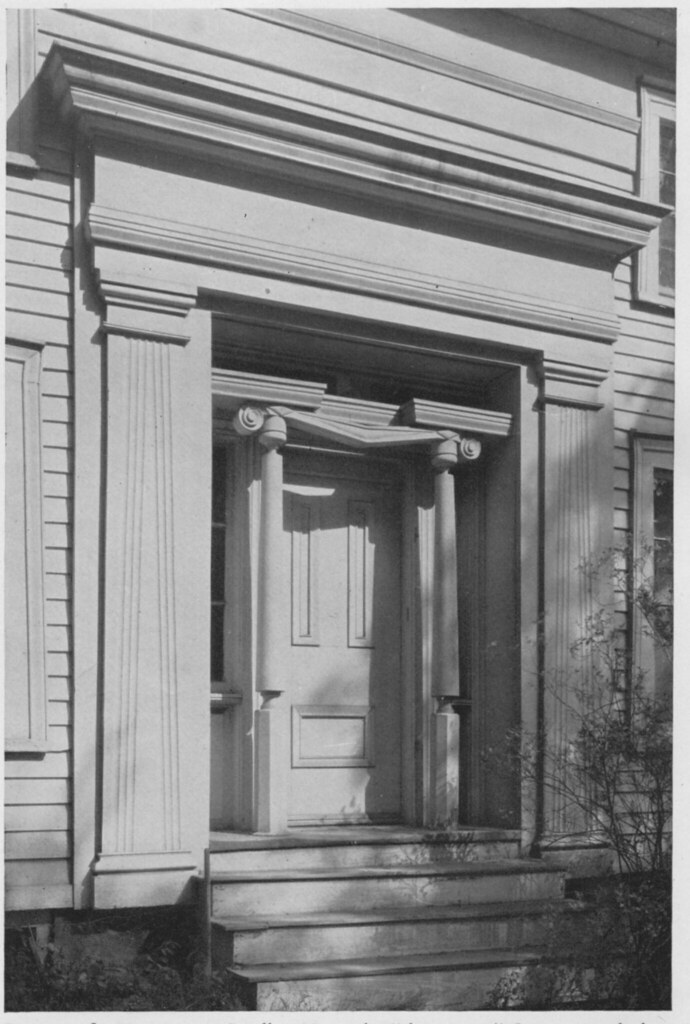With the rise of the social sciences, architectural historians (and, for that matter, professionals in other fields) substituted accuracy and objectivity for creative or poetic description. New works of history, though hardly condescending, lack the
vigor of their predecessors. I.T. Frary's
Early Homes of Ohio is an excellent example of the "old" way of writing about architecture. In Chapter 6, for example, Frary observes:
A most curious illustration of the naïve manner in which the builder blithely rang the changes on staid classic details is to be found on a doorway near Medina (Plate 128). The crude pilasters on either side are built with entasis, but, apparently feeling the need for more tapering lines to satisfy the eye, the builder deliberately ran flutings which converge from the base, toward the capital, thus solving, for his mind at least, the problem of giving entasis and lightness of proportion to the shaft.
But this genius did not stop there. He also introduced turned columns, with acorns at the top, on each side of the door and, surmounting each with one volute of an Ionic capital, he stretched that capital, in a triumphant flourish, completely across the doorway, making one capital to grow where two had always grown before.
The home in question stands
near Seville, in Medina County, Ohio.


No comments:
Post a Comment